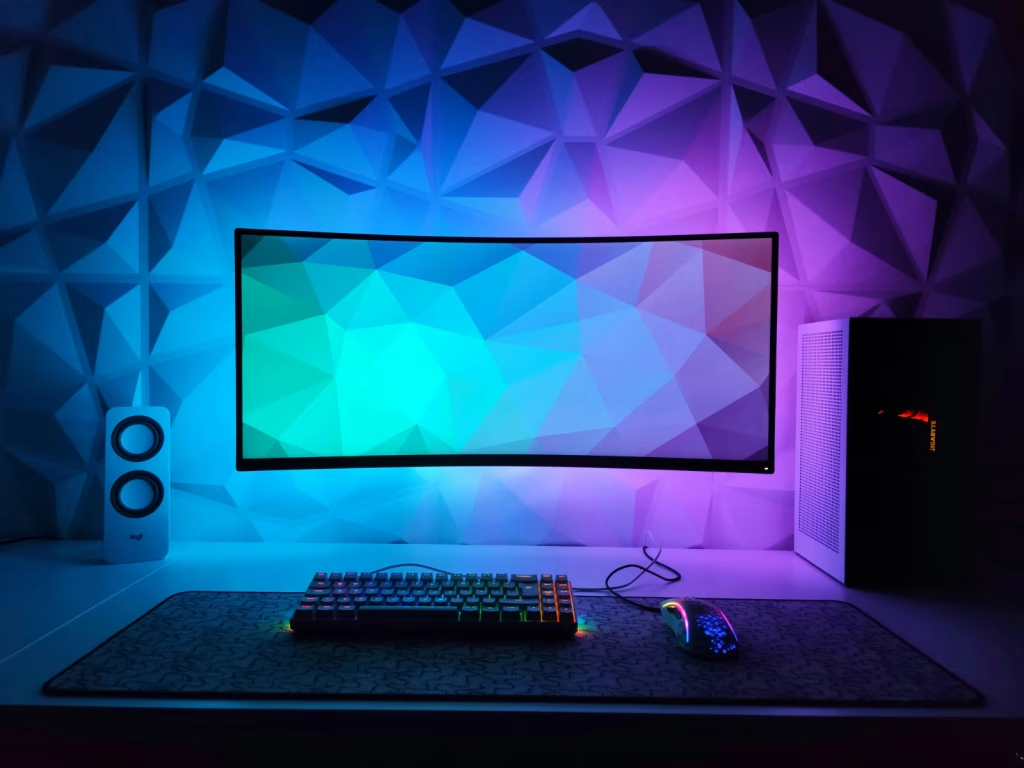Image source : Unsplash
With more than three billion gamers worldwide, the demand for specialized gaming equipment is rapidly increasing, fueled by the rise of e-sports and immersive gaming experiences. The global gaming peripherals market, valued at $7.35 billion in 2023, is expected to grow at a compound annual growth rate (CAGR) of 11.1% from 2024 to 2032, according to Polaris Market Research. As gaming technology evolves, so too do the peripherals designed to enhance the gaming experience. This article will examine key product types and the essential features that define them, addressing the needs of the growing gaming community.
Gaming Mice: Precision and Responsiveness
Gaming mice are essential for achieving accuracy in fast-paced games. Key features include:
- High DPI settings: Higher DPI (dots per inch) offers precise tracking, enabling swift and accurate movements. A higher DPI means the cursor moves further with less physical movement, making it more sensitive, while a lower DPI requires more movement for the same result.
- Many professional gamers opt for DPI settings between 400 and 1,600, striking a balance between speed and precision, ideal for first-person shooters (FPS) that require accurate aiming. While some gaming mice advertise extremely high DPI settings (up to 32,000 DPI), most advanced players rarely use settings above 1,600 DPI for competitive play.
- Customizable buttons: Many gaming mice feature programmable buttons tailored to specific in-game actions, offering a strategic advantage.
- High polling rate: The polling rate, measured in Hertz, refers to how frequently the mouse updates its position to the computer. Common options include 125, 250, 500, and 1,000Hz, with higher polling rates ensuring smoother, more responsive movements.
- Low latency: Latency refers to the delay between a user’s action and its registration on-screen. Low latency is crucial for fast, precise responses in gaming, with good mice achieving rates under 5 milliseconds and the best models offering rates below 2 milliseconds.
Gaming Keyboards: Speed and Customization
Gaming keyboards are designed to enhance both gameplay and typing efficiency. Key features include:
- Mechanical switches: Offering tactile feedback and rapid response times, these switches are vital for both gaming and typing.
- Customizable RGB lighting: Many keyboards offer personalized lighting effects, contributing to an immersive gaming atmosphere.
- Dedicated macro keys: These keys provide quick access to complex commands, improving gameplay efficiency and strategic options.
Gaming Headsets: Immersive Audio Experience
Audio quality plays a crucial role in gaming, with headsets designed for an exceptional experience. Key features include:
- Audio quality: Larger drivers (40-50mm) enhance sound quality and bass response, with a standard frequency range of 20Hz to 20kHz. Wider ranges (e.g., 10Hz to 40kHz) offer richer audio experiences.
- Surround sound: This feature improves spatial awareness, allowing players to detect subtle in-game audio cues that influence gameplay.
- Active noise cancellation: Effective headsets block ambient noise by -20 to -30dB, creating a more immersive experience. Some headsets offer adaptive noise cancellation, adjusting to the surrounding environment for added comfort.
- Comfortable design: Memory foam ear cushions and adjustable headbands ensure long-term comfort during extended gaming sessions.
- Noise-canceling microphones: These microphones minimize background noise, improving voice clarity for team communication.
- Connectivity: Players can choose between wired and wireless headsets, with wireless models offering more mobility. Low-latency wireless options (e.g., 2.4GHz) are preferred.
Gaming Chairs: Comfort and Ergonomics
Comfort is essential for long gaming sessions, and gaming chairs are designed for this purpose. Key features include:
- Ergonomic design: Chairs that support proper posture reduce strain on the back and neck, allowing for longer, more comfortable gaming sessions.
- Adjustable features: Adjustable armrests, lumbar support, and seat height help create a personalized, comfortable setup.
- Breathable materials: These materials regulate temperature, ensuring comfort during extended play, such as mesh fabric, velour, memory foam, and cooling gel-infused foam.
Gaming Desks: Functionality and Organization
A well-designed gaming desk improves comfort and organization. Key features include:
- Height adjustability: Adjustable desks promote good posture and allow for customization. Various mechanisms, such as manual cranks, electric motors, and pneumatic lifts, offer flexibility.
- Cable management systems: These systems help keep cords organized, reducing clutter and distractions.
- Ample surface area: A larger surface accommodates multiple monitors and peripherals, keeping everything within easy reach.
Gaming Controllers: Versatility and Customization
Modern controllers are designed for versatility and personalization. Key features include:
- Multiplatform compatibility: Many controllers work across various gaming systems, providing flexibility in different gaming environments.
- Customizable buttons and profiles: Players can adjust controls to their preferences, enhancing comfort and gameplay.
- Adjustable thumbsticks and trigger sensitivity: These features allow for a tailored experience suited to different gaming genres.
Additional Accessories Enhancing the Gaming Experience
Several accessories can elevate the gaming experience. Notable features include:
- Gaming glasses: Often featuring blue light-filtering lenses, these glasses reduce eye strain during long sessions, making them essential for serious gamers.
- Mouse pads with extra features: Some mouse pads offer built-in wireless charging or RGB lighting, combining functionality and style.
Conclusion
Top gaming peripherals are defined by precision, immersive audio, comfort, and customization. B2B professionals must understand these key features to offer products that meet the growing demands of gamers. By catering to the evolving needs of the gaming community, B2B buyers can provide peripherals that foster engagement, enhance the gaming experience, and keep pace with the rapid technological advancements in the gaming industry.
